Spanish is a global language with its origins rooted in the Castillian dialect. Originating on the Iberian Peninsula in Europe — a mountainous region home to Spain and Portugal — the Spanish language spread worldwide and is natively spoken by more than 485 million people. Mexico is the largest Spanish-speaking country, while the U.S. comes in second. In addition, Spanish is the most prominent of the big five Iberian Romance (Latin) languages. The other four languages in this group are Portuguese, French, Italian, and Romanian.
When considering classifications, it is essential to grasp what makes something “official.” An official language has a formal legal status in a particular state or government through its constitution. Some lists vary depending on the context, such as territories and other factors. However, for this specific list, we are solely focusing on countries. With that in mind, let’s explore the 20 countries where Spanish is the official language heading into 2024. This list is ranked in order by population based on 2023 figures.
#1: Mexico (Population: 129,875,529)
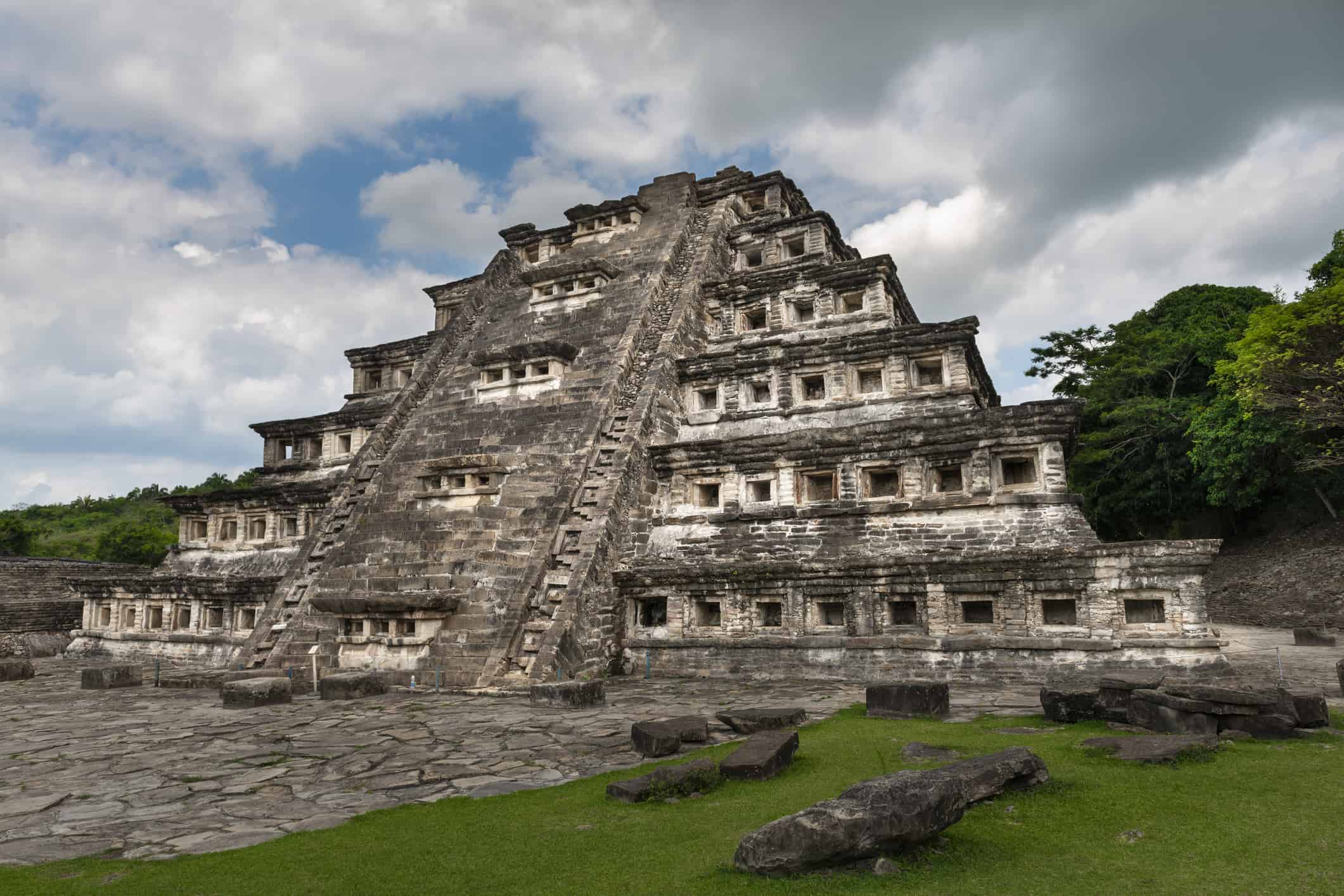
More than 22 million people live in Mexico City, the capital of Mexico.
©Tiago_Fernandez/iStock via Getty Images
Bordered to the north by the U.S., Mexico is located in the Southern part of North America and is the 13th-largest country in the world. It comprises 31 states, and Mexico City is the nation’s capital — home to an estimated 22,281,442 residents. Spanish is by far the primary language spoken in Mexico at 93.8%, accounting for more than 120 million people. The Pyramid of the Niches is an important ruin in El Tajín, Mexico, a distinctive pre-Columbian archeological site.
#2: Colombia (Population: 49,336,454)
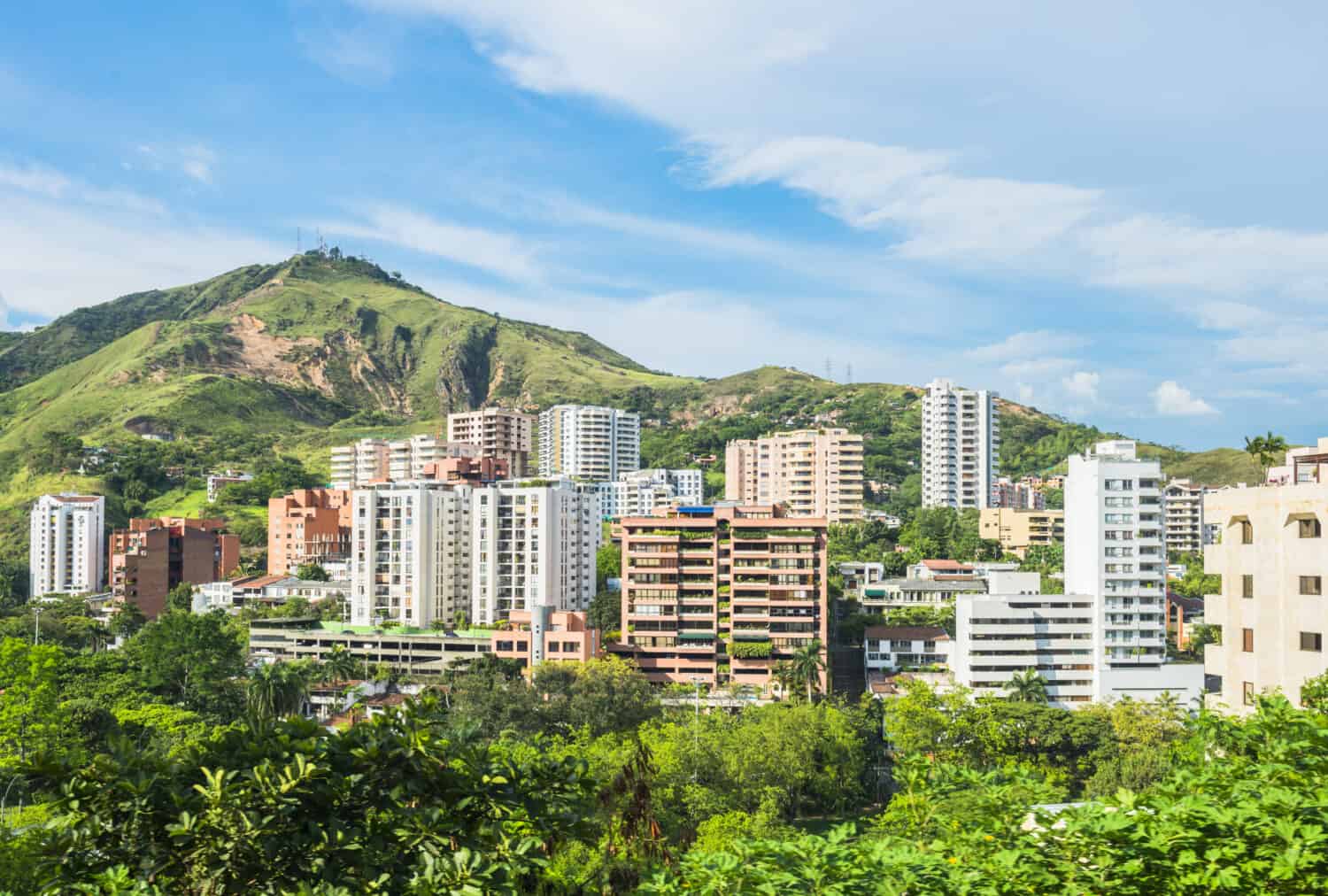
Colombia has coastlines on both the North Pacific Ocean and the Caribbean Sea.
©oscar garces/Shutterstock.com
Colombia is a South American country bordered by Panama. Its capital, Bogotá, is the largest city in the nation, with more than 7 million people in the high-altitude northern Andes Mountains. While Spanish is the primary language (around 99.5%) of Colombians, the nation is also home to 65 Amerindian languages. In addition, Colombia is the only country with coastlines on the North Pacific Ocean and the Caribbean Sea.
#3: Spain (Population: 47,222,613)

About 92% of people living in Spain are native Spanish speakers.
©Wirestock Creators/Shutterstock.com
Located in Southwestern Europe, Spain borders the Mediterranean Sea, the North Atlantic Ocean, and countries like Morocco and France. Spain’s capital and largest city is Madrid, with an estimated population of 6,751,000 people. The highest elevation point in Spain is Pico de Teide (Tenerife), located on the Canary Islands at 3,718 m. Approximately 92% of individuals in Spain are native Spanish speakers.
#4: Argentina (Population: 46,621,847)
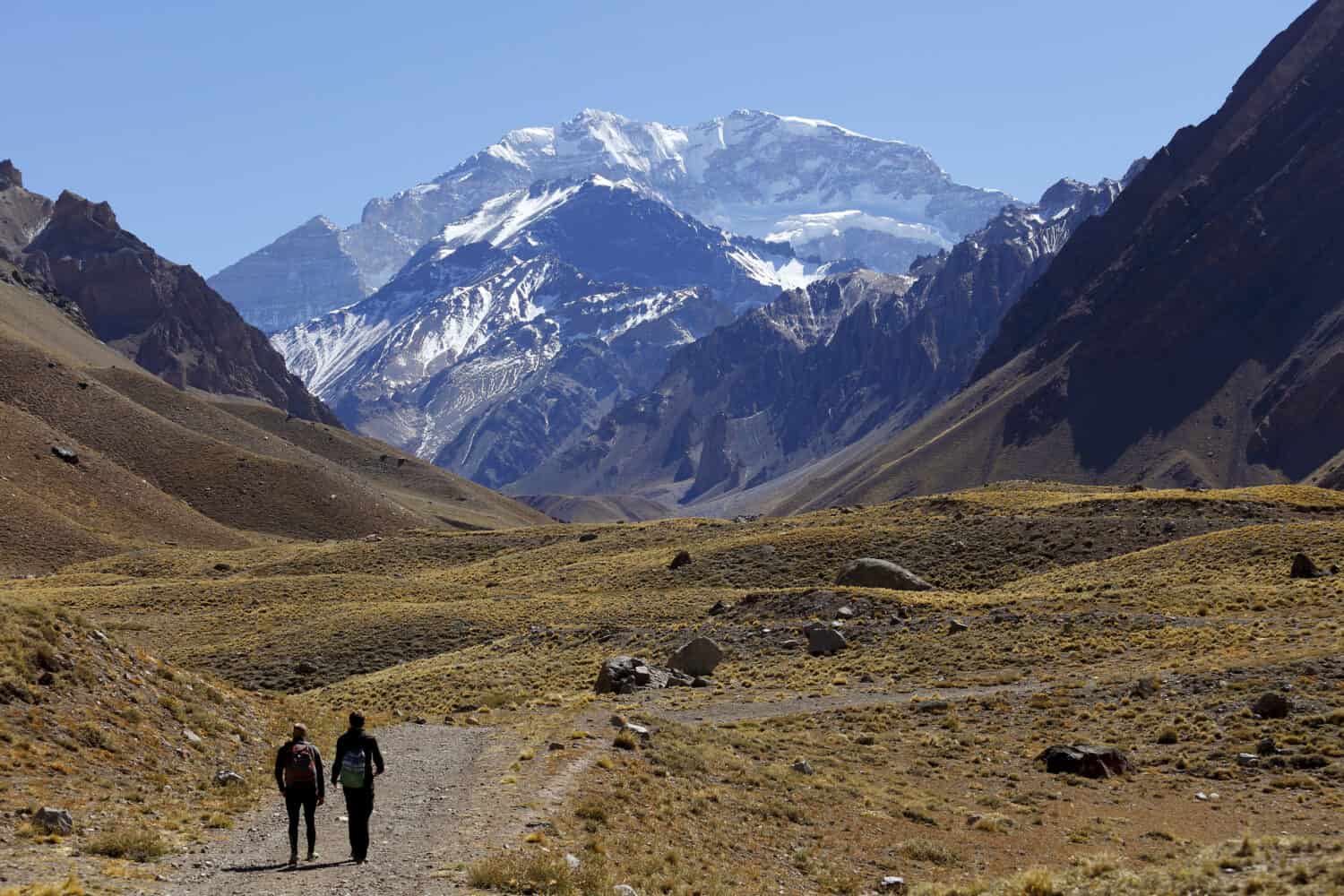
Aconcagua is the highest mountain in the Americas at 6.960 m.
©rocharibeiro/Shutterstock.com
Argentina is located in the southern half of South America, with 95% of its population being native Spanish speakers. Its capital, Buenos Aires, was established in 1536 and is home to 15,490,000 people. Argentina is known for its iconic mountain, Aconcagua. Aconcagua is in Mendoza Province, Argentina, and is the highest mountain in the Americas at 6.960 m.
#5: Peru (Population: 32,440,172)

Rainbow Mountain is a natural phenomenon renowned for its striking beauty.
©maylat/iStock via Getty Images
Found in Western South America, Peru is a vast landscape that borders the South Pacific Ocean. It is between Chile and Ecuador, and 82.9% of its population speaks Spanish. Originally named Vinicunca and located in the Andes Mountains of Cusco, Peru, Rainbow Mountain is a striking sight that draws Peruvian locals and tourists alike.
#6: Venezuela (Population: 30,518,260)

Angel Falls is the tallest waterfall in the world.
©Krzysztof Goldman/Shutterstock.com
Born from the collapse of the Gran Colombia in 1830, Venezuela is on the northern coast of South America alongside the Caribbean coast. Although Venezuela has over 40 languages, most (about 21 million) speak Spanish as their primary language. Established in June 1962, Canaima National Park is Venezuela’s most notable natural attraction. It is found along the borders of Brazil and Guyana and features Angel Falls, the tallest waterfall in the world.
#7: Chile (Population: 18,549,457)
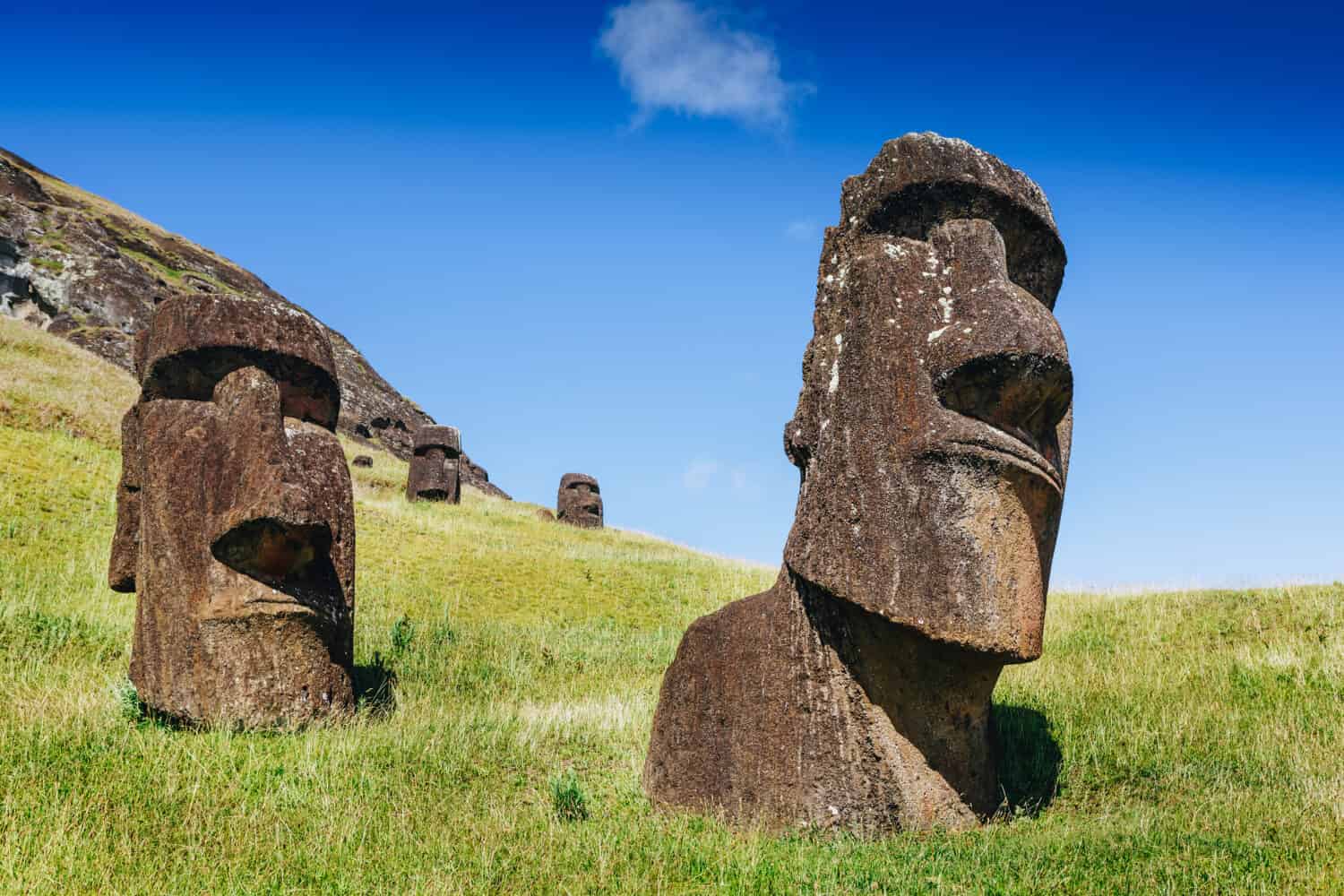
Rapa Nui National Park honors the indigenous Polynesian peoples of Easter Island.
©Olga Danylenko/Shutterstock.com
A country found in western South America, Chile stretches between the Andes Mountains and the Pacific Ocean. Interestingly, Chile is also the closest country to Antarctica. Like the other individuals from the countries on this list, Chileans hold Spanish as their official language. In fact, 99.5% of citizens speak Spanish. The nation is home to Rapa Nui National Park, located on Easter Island. The park honors the legacy of the indigenous Polynesian peoples of Easter Island, known for their distinctive architecture and sculptures, representing their ancestral heritage.
#8: Guatemala (Population: 17,980,803)
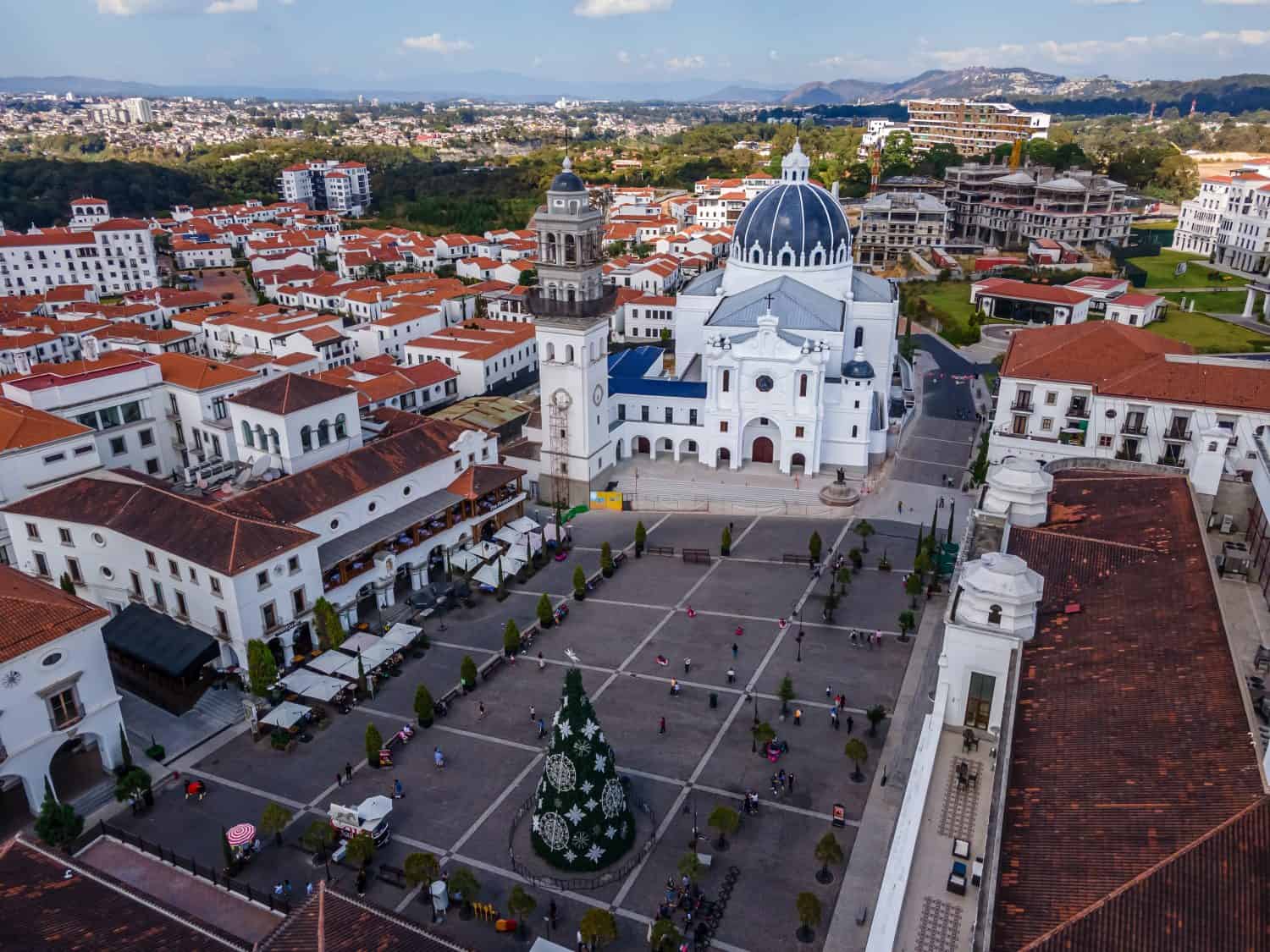
Plaza Cayala offers a variety of culinary and nightlife experiences for tourists and locals.
©Gianfranco Vivi/Shutterstock.com
Guatemala, a Central American country, secured independence from Spain in 1821. Guatemala is bordered by Mexico and El Salvador (North Pacific Ocean) and the Gulf of Honduras (Caribbean Sea) between Honduras and Belize. While 93% of the population speaks Spanish, an estimated 69.9% speak Spanish as their native language. This is due to the prevalence of indigenous languages like Mayan, for example. Furthermore, 56% of the population is of a mixed lineage called Mestizo, comprised of European and indigenous ancestry. Tourists and locals enjoy Plaza Cayala, which is located in Guatemala City. It offers shopping and dining experiences, as well as nightclubs and bars.
#9: Ecuador (Population: 17,483,326)
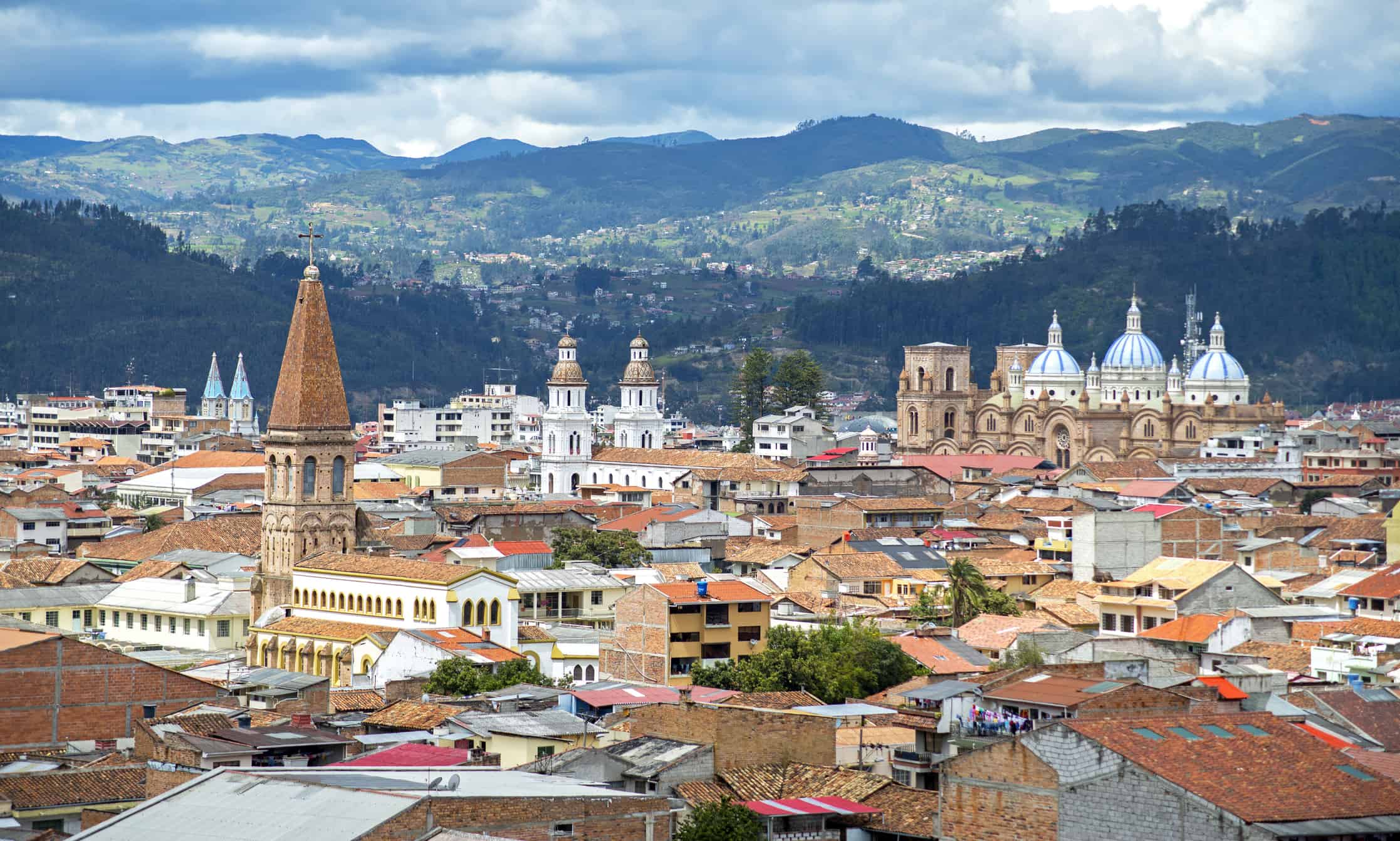
Quito is the capital of Ecuador and is known for its religious and cultural sites.
©iStock.com/AlanFalcony
Ecuador is a country in western South America, with Spanish as the predominant language at approximately 93%. The nation borders the Pacific Ocean between Colombia and Peru at the Equator. Nature lovers can explore the diverse landscape and wildlife of the Amazon rainforest. The Amazon rainforest is the world’s largest rainforest, spanning 2,700,000 sq mi and nine nations. Quito, the nation’s capital, has many religious sites and 16th and 17th-century palaces.
#10: Bolivia (Population: 12,186,079)
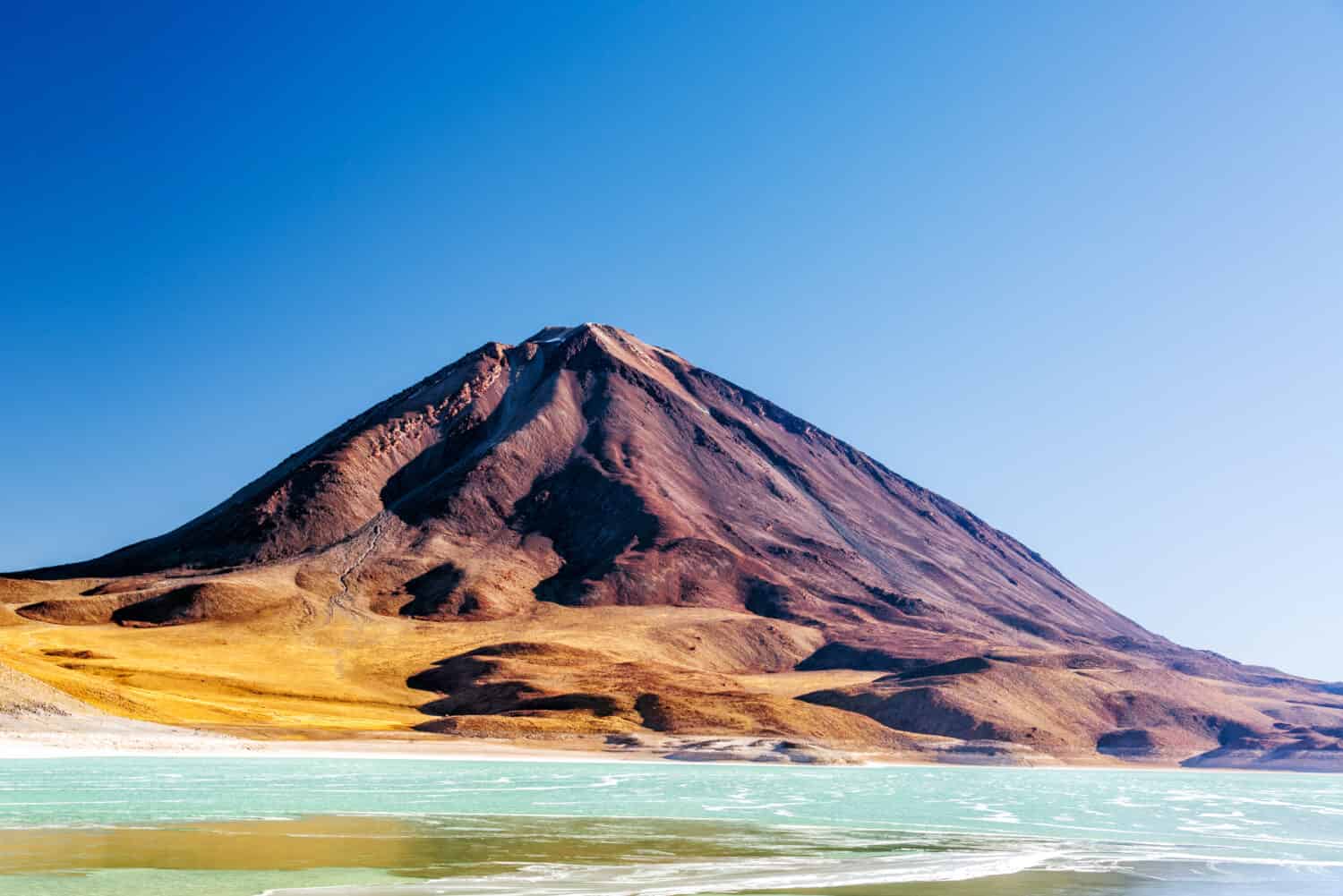
Licancabur Volcano intrigued NASA scientists because of its climatic conditions, similar to those expected on Mars.
©Structured Vision/Shutterstock.com
Bolivia, a landlocked country in western-central South America, got its name from Simón Bolívar. Bolívar was a Venezuelan political and military leader who led Venezuela, Ecuador, Panama, Peru, Colombia, and Bolivia to independence from the Spanish Empire. His exploits earned him the title of “El Libertador” (the Liberator). While Bolivia has a substantial indigenous population, citizens still predominantly speak Spanish. This accounts for more than 70% of the population. In addition, 68% of the population is of Mestizo origin. One of the many incredible sightings in the region is Licancabur, which is part of the Andean Central Volcanic Zone. The volcano intrigued NASA scientists because the climatic conditions around the crater mirror the expected conditions on Mars.
#11: Cuba (Population: 10,985,974)
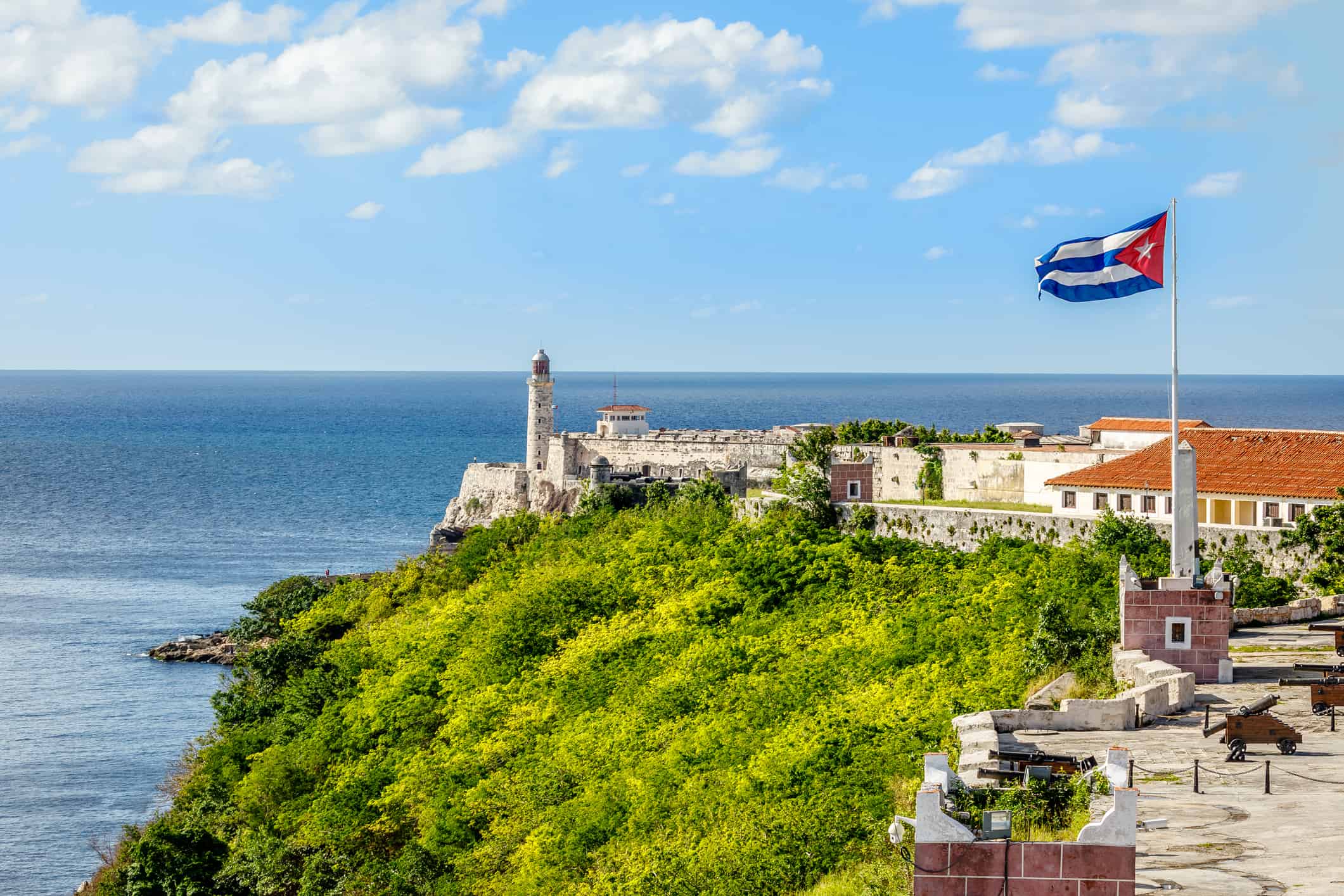
Cuba is the largest country in the Caribbean, home to nearly 11 million people.
©Vadim_Nefedov/iStock via Getty Images
Cuba is an island country at the intersection of the northern Caribbean Sea, the Gulf of Mexico, and the Atlantic Ocean. It is the largest country in the Caribbean. The capital city, Havana, has a large concentration of people, an estimated 2,149,000 individuals. Havana is a bustling city regarded for its unique architecture. Cuba gained independence from Spain in 1898 and became an independent republic in 1902 following three-and-a-half years of U.S. military rule. Most (about 90%) Cubans speak Spanish as their primary native language.
#12: Dominican Republic (Population: 10,790,744)

Over 90% of individuals in the Dominican Republic speak Spanish natively.
©Lena Serditova/Shutterstock.com
The Dominican Republic is on the island of Hispaniola in the Greater Antilles archipelago of the Caribbean Sea. It gained its independence as the Dominican Republic in 1844 but returned to the Spanish Empire in 1861. However, following the war in 1863, they regained independence in 1865. While 70% of the population is mixed, over 90% speak Spanish natively. The Dominican Republic is a diverse nation and is the second-largest country in the Caribbean.
#13: Honduras (Population: 9,571,352)
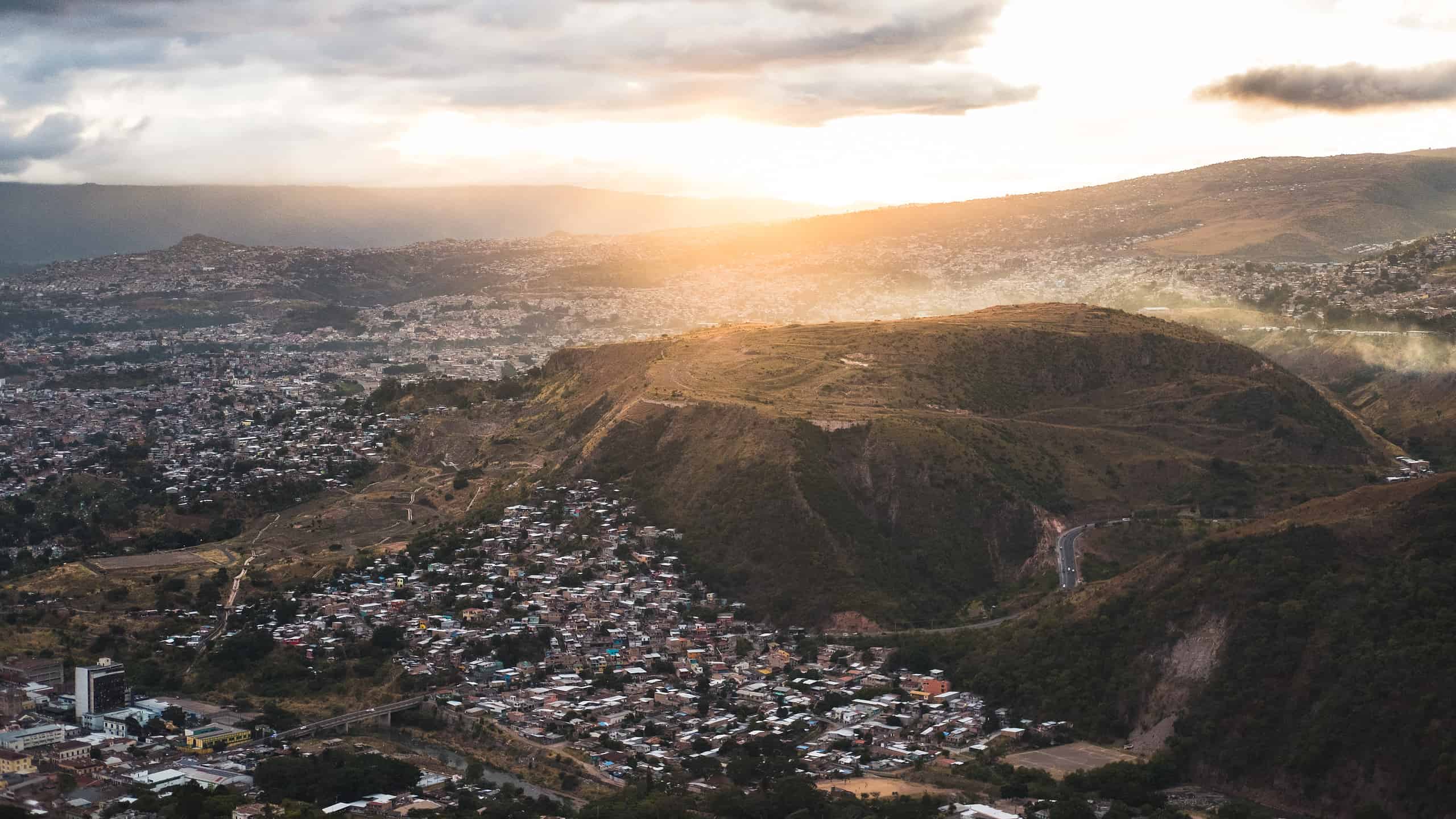
Honduras borders the Caribbean Sea, between Guatemala and Nicaragua.
©Sebastian Delgado C/Shutterstock.com
A Central American country, Honduras gained independence in 1821 but was under military rule for two decades. However, a civilian-ran government emerged in 1982. It borders the Caribbean Sea, between Guatemala and Nicaragua. Additionally, it borders the Gulf of Fonseca (North Pacific Ocean), between El Salvador and Nicaragua. The predominant ethnic group is Mestizo, and 90% of the population speaks Spanish as their first language.
#14: Paraguay (Population: 7,439,863)
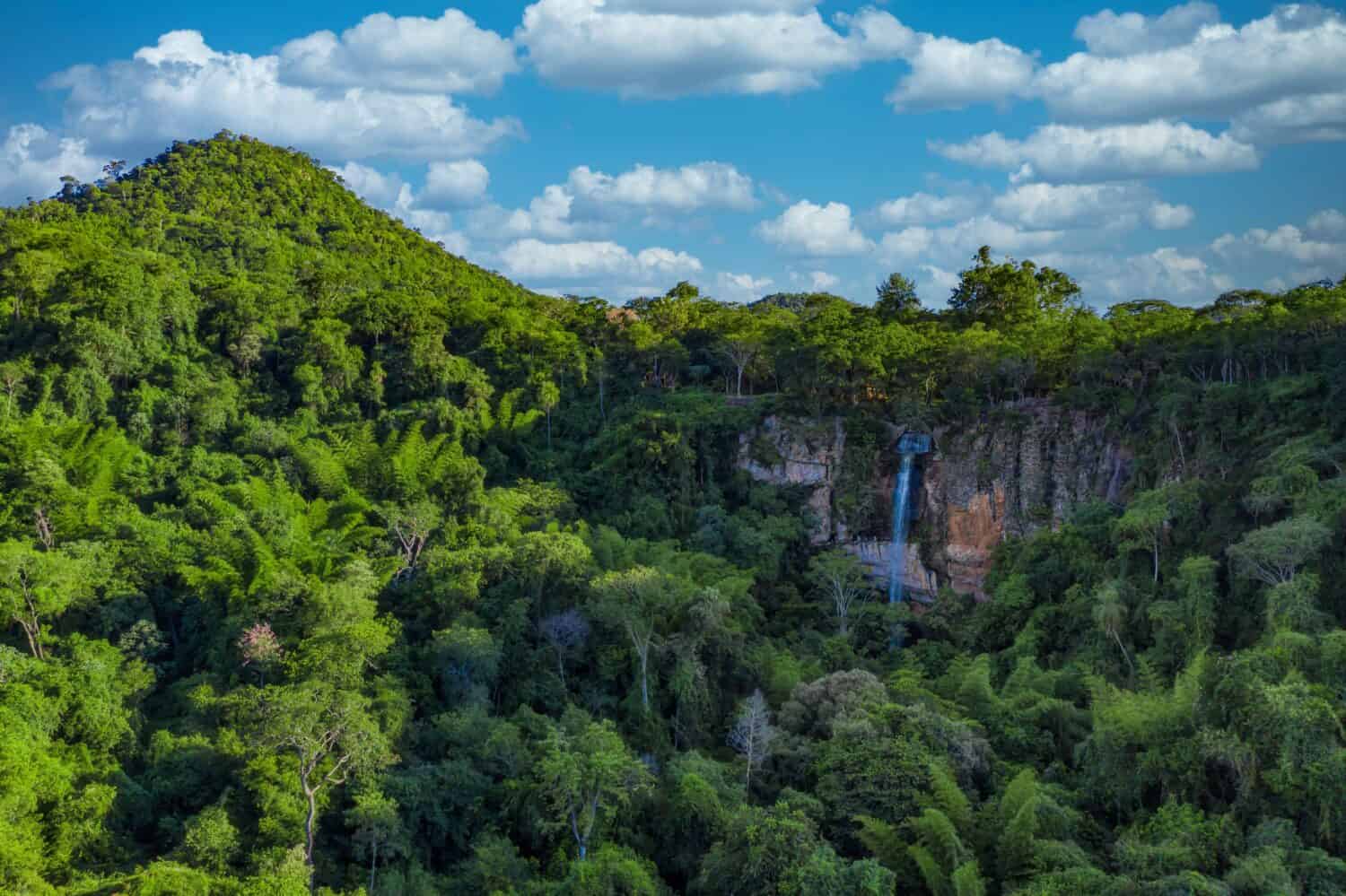
Approximately 70% of Paraguayans are bilingual.
©Jan Schneckenhaus/Shutterstock.com
Paraguay is a landlocked country in Central South America. Most of its citizens live in the capital city, Asunción, the largest city in the country. Asunción is home to approximately 3,511,000 people. Around 70% of people in Paraguay are bilingual; about 87% of individuals speak Spanish, while over 90% speak Guaraní.
#15: El Salvador (Population: 6,602,370)

Over 86% of Salvadorians are of mixed heritage.
©iStock.com/Joey's Lens
El Salvador is a Central American country, bordered on the northeast by Honduras, on the northwest by Guatemala, and south by the Pacific Ocean. More than 86% of Salvadorians have mixed heritage, but virtually all speak Spanish. The capital and largest city in El Salvador is San Salvador, with more than 2 million residents. It is a cultural, political, financial, and educational hub for Salvadorians.
#16: Nicaragua (Population: 6,359,689)

Nicaragua is the largest country in Central America.
©Silenzio76, CC BY-SA 3.0, via Wikimedia Commons - Original / License
Nicaragua is the biggest country in Central America. It is bordered by Honduras to the north, the Caribbean to the east, Costa Rica to the south, and the Pacific Ocean to the west. Lake Nicaragua boasts notable stats as well. It is the largest lake in Nicaragua, encompassing 3,191 sq mi. About 90% of the population speaks Spanish.
#17: Costa Rica (Population: 5,256,612)

San José, the capital of Costa Rica, is the largest city in the nation.
©Dmitriy Bryndin/Shutterstock.com
Costa Rica (or “Rich Coast”) is a Central American nation bordering the Caribbean Sea and the North Pacific Ocean between Nicaragua and Panama. Its capital city, San José, is also the largest, with a metro area population of around 1,462,000 people. Costa Rica is renowned for its biodiversity, mountains, volcanoes, beaches, and more. Over 100,000 Costa Ricans are of indigenous heritage, but more than 90% of the population speak Spanish natively.
#18: Panama (Population: 4,404,108)
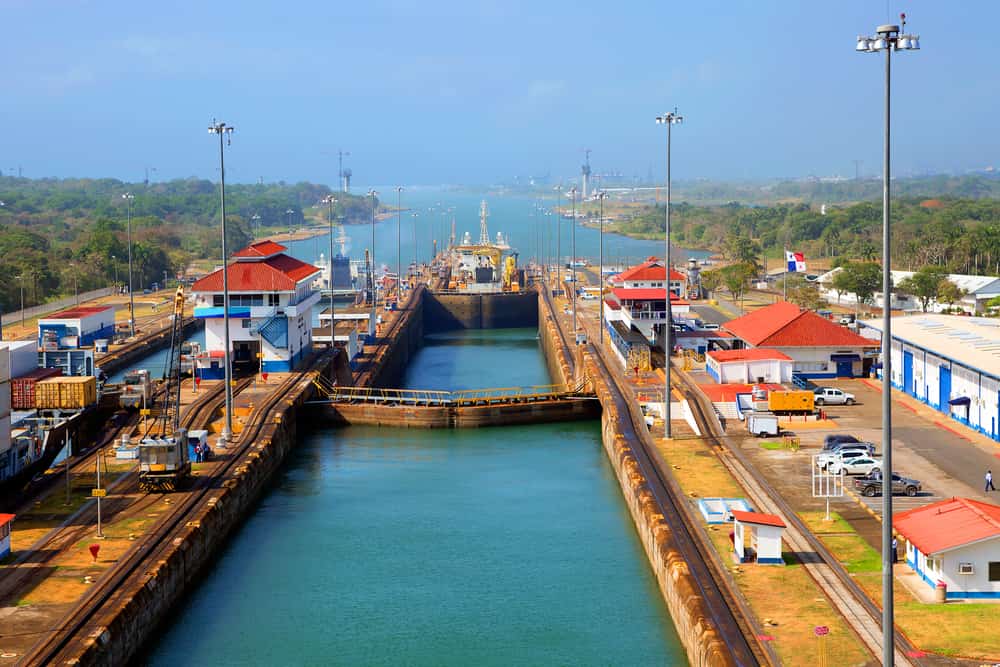
The Panama Canal was built between 1904 and 1914.
©Galina Savina/Shutterstock.com
A transcontinental country in Central America, Panama has a fascinating history. Panama broke free from Spanish rule in 1821 and joined a union that comprised Colombia, Ecuador, and Venezuela. This union was known as the Republic of Gran Colombia. The union would dissolve in 1821, but Panama remained part of Colombia until it seceded in 1903. Perhaps the most iconic site in Panama, the Panama Canal, was constructed by the US Army Corps of Engineers between 1904 and 1914. The U.S. had sovereignty over the Panama Canal Zone until a 1977 agreement ensured the complete transfer of the Canal from the U.S. to Panama by the end of the century. About 90% of Panamanians speak Spanish natively.
#19: Uruguay (Population: 3,416,264)

Nearly 99% of Uruguayans natively speak Spanish.
©Marcia Cobar/Shutterstock.com
Declaring its independence in 1825 and securing its freedom in 1828, Uruguay has undergone a lot of upheaval and reform. It is located in southern South America and borders the South Atlantic Ocean between Argentina and Brazil. It encompasses a total area of about 176,215 sq km. and is known for its beach-lined coasts and historic districts. Close to 99% of Uruguayans natively speak Spanish.
#20: Equatorial Guinea (Population: 1,737,695)
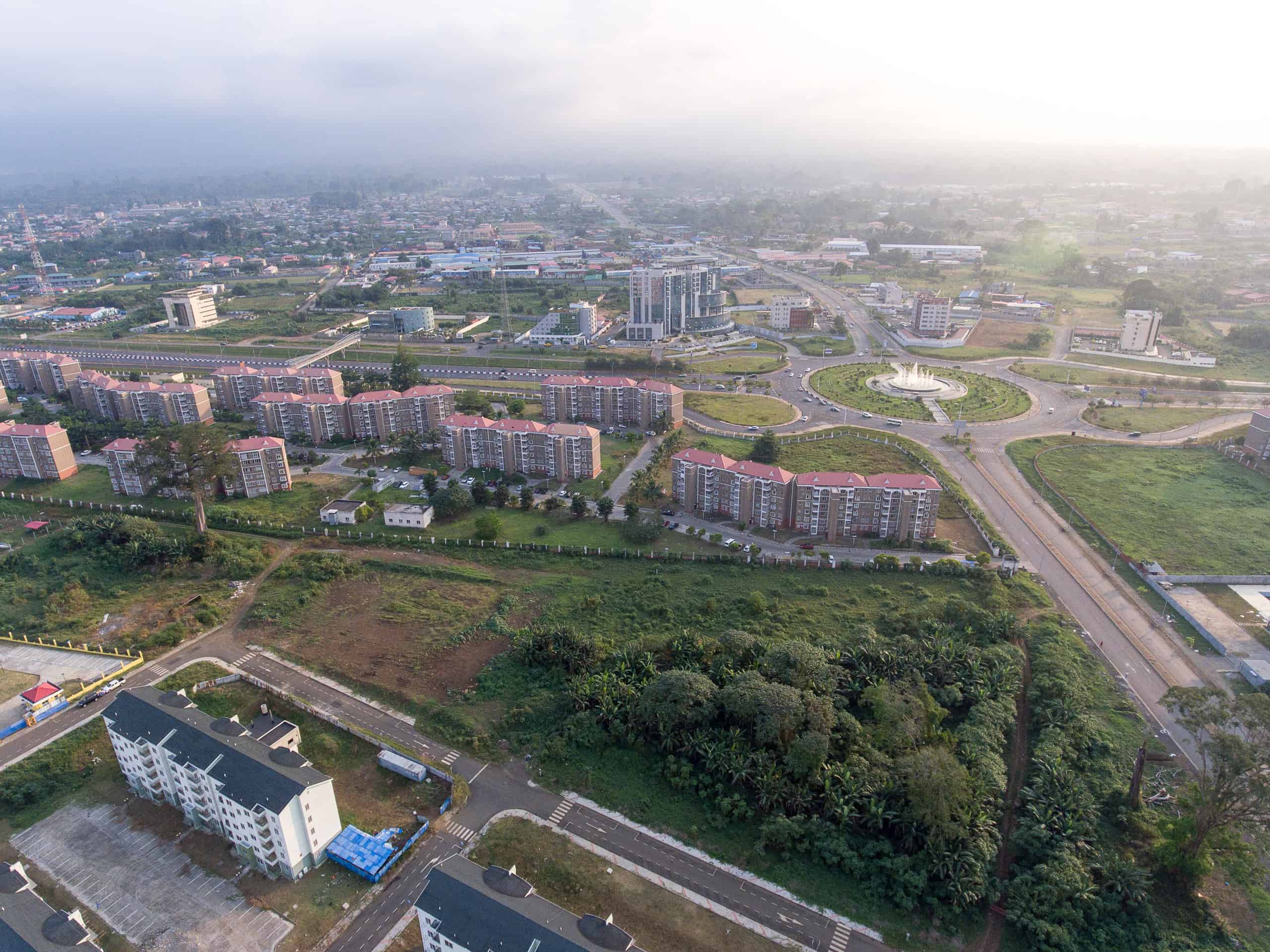
Despite what the name suggests, no part of the Equator passes through Equatorial Guinea.
©Jan Ziegler/Shutterstock.com
Found on the west coast of Central Africa, Equatorial Guinea comprises a continental territory and five inhabited islands. Interestingly, no part of the Equator passes through Equatorial Guinea. It is one of the smallest countries in Africa by land area and population, with only two cities reaching over 30,000 people. It consists of two parts: an insular and a mainland region. Around 90% of individuals from Equatorial Guinea speak Spanish. The nation’s capital, Malabo, is located on Bioko Island. It is resource-rich with oil and fashioned with Spanish colonial-era architecture.
The photo featured at the top of this post is © eskystudio/Shutterstock.com
Thank you for reading! Have some feedback for us? Contact the AZ Animals editorial team.







